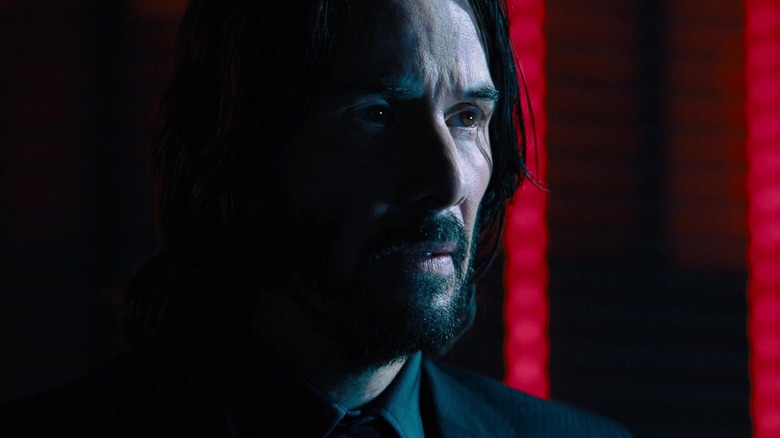John Wick 4's Cast And Crew Endured 13 Straight Weeks Of Night Shoots
One of the more taxing elements of the film production process is night shooting. Our bodies are so wired and conditioned to operate during the day that completely throwing off one's own sleep schedule to work exclusively in the dark for days, if not weeks at a time can truly exhaust you physically. I know some of you think you are night owls and have no trouble staying up until three o'clock in the morning, but my guess is that you aren't doing your job in those twilight hours. And if you are, how often does it involve intricately choreographed stunt work or lugging around lighting and sound equipment through the streets of Germany or France?
A great deal of some films, unfortunately, are set at night. Some productions try to get around this with day-for-night shooting, but that almost never looks the way you want it to. A recent poor example of this technique is its implementation in the "House of the Dragon" episode entitled "Driftmark." When a production actually has the resources to properly shoot at night, the results are always going to be more visually dynamic. Such is the case with the "John Wick" series, whose neon-soaked lighting scheme perfectly lends itself to beautiful night photography.
"John Wick: Chapter 4," in particular, features a tremendous amount of screen time at night, and considering the film itself gets dangerously close to the three-hour mark, that nighttime stuff required a disproportionately lengthy schedule for night shoots, much to the chagrin of nearly everyone involved.
'Everybody was miserable'
Nearly all of the most elaborate sequences in "John Wick: Chapter 4" take place at night. You have the incredible Osaka Continental showdown, the Berlin club set piece with Scott Adkins, and the entire third act of the film set when it's dark outside. Sometimes they can get around it because of interior shooting, but a lot of these sequences take place out in the open. Appearing on the CG Garage Podcast, the film's visual effects supervisor Jonathan Rothbart detailed just how massive the night shoot schedule was:
"I think we ended up shooting 97 days of nights, and at one point, it was 13 straight weeks of nights. [sic] Oddly enough, I loved it. I think everybody was miserable except Chad [Stahelski] and I on set, 'cause we both are kind of built that way."
Without question, I would have been one of those miserable people. For reference, the infamous "The Long Night" episode of "Game of Thrones," which is 81 minutes long and takes place entirely at night, required 11 weeks of night shoots, and that was such a miserable experience that director Miguel Sapochnik has basically disavowed night shooting since, as that "House of the Dragon" episode indicates. "John Wick: Chapter 4," nearly doubled the number of days of night shoots, and there were still plenty of shoots during the day they had to do too. To have hundreds of cast and crew sign up to be a part of that tells you a lot about the faith they had in this project, and I hope that when they all saw the final project that messed up their sleep schedules and fuzzy brains, they felt it was all worth it.

